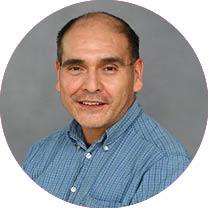San Antonio organization SA Digital Connects and its public and private sector partners are urging all Bexar County residents and business owners to look up their addresses to verify that data and information are listed accurately on the new National Broadband Map created by the Federal Communications Commission.
According to a news release, the map shows where internet service is and is not available, what providers are available, what kind of connectivity they offer, and at what speeds.
If the information listed on the map for the address is wrong, residents are encouraged to use the Map Challenge site created by SADC, which is available in English and Spanish, to submit a challenge to correct the FCC’s map.
SA Digital Connects officials said ensuring comprehensive, correct information on the National Broadband Map will help its larger mission of closing the local digital divide.
“We must work together to prove where our neighbors need internet access so that the FCC has an accurate picture of internet connectivity for our community,” SADC executive director Marina Alderete Gavito said in a statement.
The release said the goal is to ensure accurate data for addresses in San Antonio and Bexar County. The map will calculate the amount of funds allocated by the National Telecommunications Information Administration to each state for future high-speed internet projects to help close the digital divide.
Due to the complexity of the map challenge process and the Jan. 13 deadline, Bexar County, the city of San Antonio, and SADC cosigned a letter to the FCC and NTIA and shared concerns about what they call an overestimated availability of broadband internet service and the timeframe that will lead to inequitable distribution of funding and affect those residents and business owners most in need.
SADC also partnered with the Bexar County geographic information system team on a user-friendly simplified form to submit a challenge and collect residents’ feedback. The data collected from this form will be used to submit a bulk challenge for the area to the FCC, the release said.
“Accurately identifying who has access to high-speed broadband and who does not will enable our community to be eligible for federal funding to enhance broadband infrastructure, adoption, and affordability,” said city chief innovation officer and SADC board vice chair Brian Dillard said.
Dillard also said this is the first time this type of data has been made available to the public, and residents have a chance to search for their address, confirm or dispute the services reported by providers at their location.





